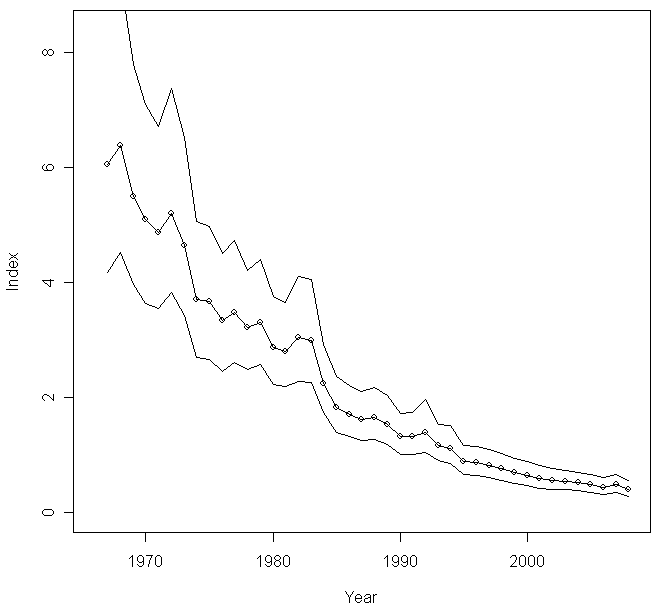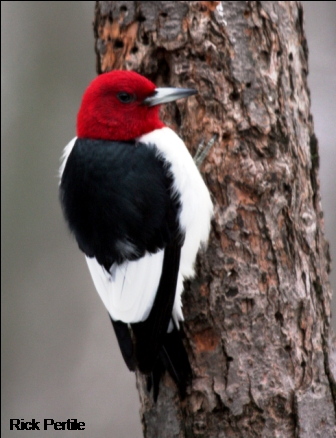The Challenge
Red-headed Woodpecker populations have declined 89% since 1967. The bird has experienced an average decline of 4.6% per year since 1980 due to loss of habitat and other factors. The Audubon Society recognizes the Red-headed Woodpecker among the top five birds of concern in much of its range: Minnesota, Illinois, Indiana, Michigan, North Dakota and Ohio.

Source: USGS
Abundance of Red-headed Woodpeckers also impacts many other species. Red-heads are primary cavity excavators. They create tree holes for nesting, food storage and roosting. Once abandoned, these cavities become sites for secondary cavity nesters, birds that will not create their own holes but depend on holes left by others. These species include bluebirds, swallows, wrens, flycatchers, kestrels, screech-owls as well as others. Loss of red-heads can have a wide impact.
The top reason for Red-headed Woodpecker decline is the loss of woodlot habitat. Red-heads favor woodlots with a significant number of dead snags and trees with dead branches (termed "wildlife trees"). Woodlot management in the last 50 years has encouraged the removal of such wildlife trees.

